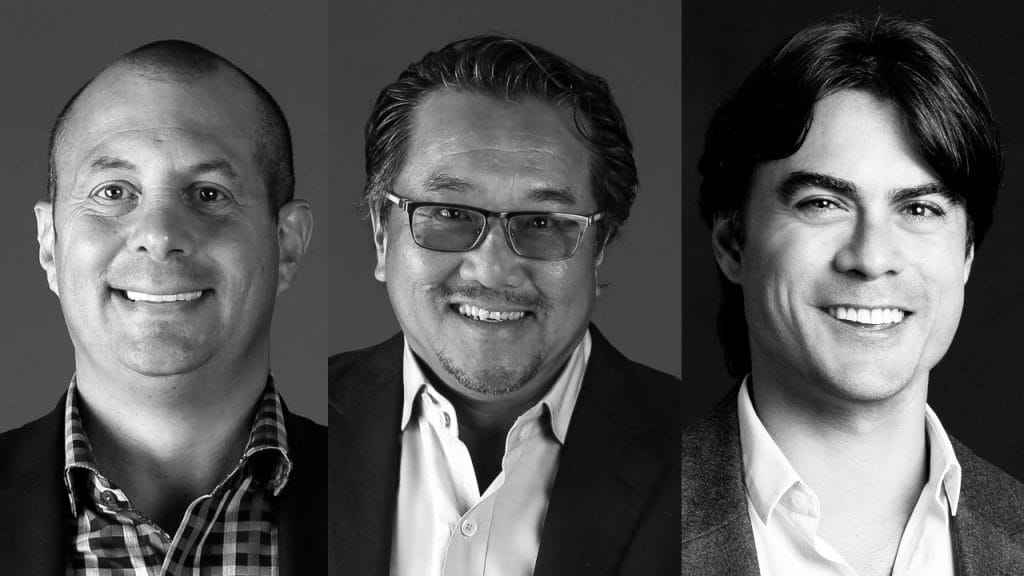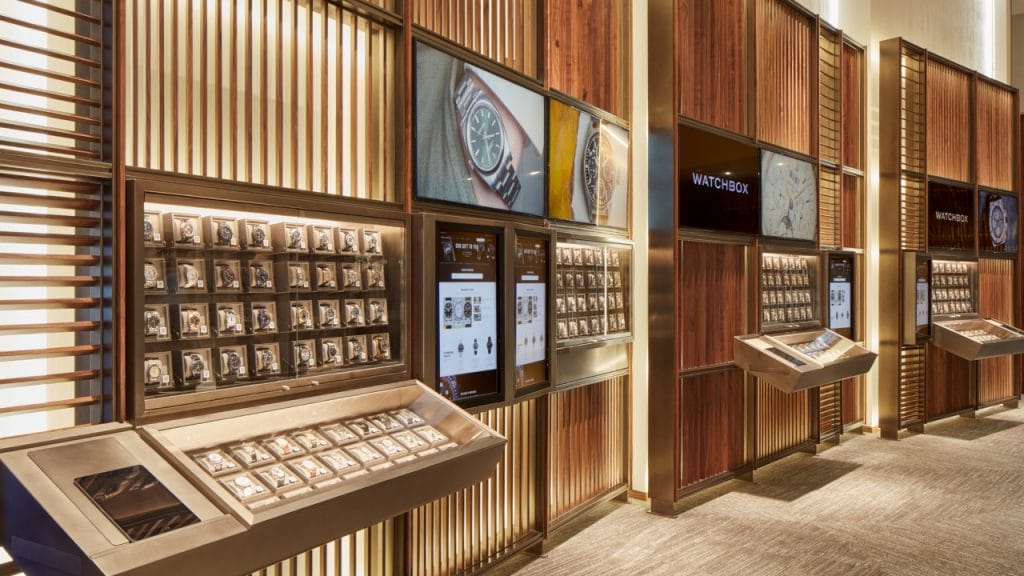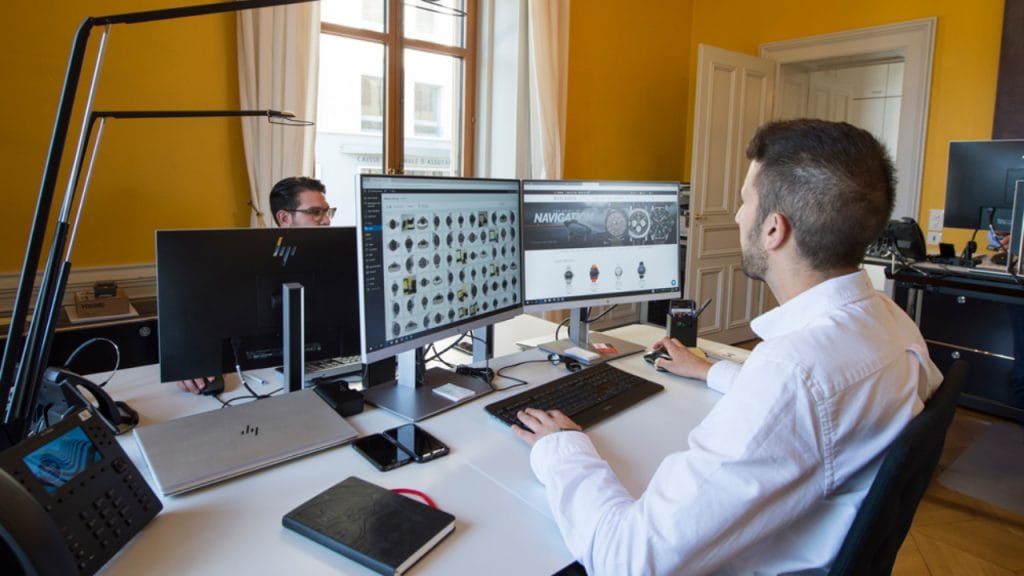WatchBox, the pre-owned luxury watch powerhouse, is on a roll. Fresh off raising US$165 million in funding and its acquisition of independent superstar De Bethune last year, the company is now set to invest in inventory, CRM, staffing, and above all, brick-and-mortar retail.
To kick off the strategy, it will open another location in the Middle East this year, in Riyadh, the capital of Saudi Arabia—a joint venture with Ahmed Seddiqi & Sons, its partner in its Dubai WatchBox store. The plan is to open eight stores in total over the next two years, which will bring it to a worldwide network of 13 trading offices and stores. These include locations in Philadelphia, Neuchatel in Switzerland, Hong Kong, Singapore and Dubai. The overall pre-owned watch market is valued at US$18 billion today, and is predicted to rise to US$32 billion by 2025. WatchBox expects to finish 2021 with US$300 million in sales, and will have generated revenue of over US$1 billion since launching five years ago. We sat down with WatchBox co-founder and global CEO Justin Reis to ask him what’s next, for both WatchBox and the pre-owned market.

What does WatchBox plan to do with its recent US$165 million raised in funds?
We will be opening up more outlets, eight locations altogether in the next two years, with five in 2022, both domestic [in the US] and international. It’s going to be fun. We’re opening up locations in New York, Miami and L.A., in what will be 3,000- to 5,000-square-foot spaces. Unlike the space in Dubai, which is located in a mall in the Dubai International Financial Center, they will be above-ground locations. We use the word “retail” very lightly. It’s more of a gathering place, a collectors’ lounge where people can come in, have a drink, meet other like-minded collectors. It’s not designed to be aimed at men, but at the moment, 95 per cent of our customers happen to be men. We want to build our business to serve more female collectors, and we will build our inventory with that in mind.
Pre-owned watch sales will be about half the size of the market for new watches by 2025, according to McKinsey & Co. How long before sales of pre-owned overtake the primary market?
Boston Consulting Group says it will happen by 2030, but based on current growth rate in the secondary market and the number of new collectors entering the watch market, I think it could happen in the next five to six years, in 2028. What’s happening is that you’ve got this fixed supply of new product coming into the market from the brands, and you’ve got an audience of customers that are ready to buy and there’s not enough product available to meet the demand. Now that the secondary pricing has risen above primary pricing, this new consumer feels more comfortable and confident about spending, say, US$15,000 in the primary market, because they know they can sell the product in the secondary market if they ever want to get out of it.

Why are people more comfortable buying in the secondary market now?
It’s true that people are not distinguishing as much between new and pre-owned, because the standards are getting much better. Our standard is to offer watches that are in near-new condition. The watches we sell come in professional packaging, it comes with a warranty. We’ve done a lot to make the customer journey easy, and in many ways, the relationship for the consumer with us is better than that with authorized dealers. At primary retail, the relationship stops when you buy the watch, because they don’t have anything else you want. Their customers are coming in and they have to say no to them all the time…unless you’re one of the lucky ones to win the Willy Wonka golden ticket and you get the watch. You end up having consumers that go from retailer to retailer, trying to forge these fake relationships, just so they can get watches. I think we’re in a fortunate position because we always have inventory available.
What is the value of your inventory and what are your standards for stocking product?
It’s around US$150 million today. In two years, it will be north of US$200 million. We are disciplined about what we buy. We own our inventory. We’re not a marketplace, and so we’re always building this model around having the optimum inventory to meet demand. And we buy watches we believe in, and in that sense, we are also collectors.

Fifty per cent of your clients are said to be existing customers. How do you balance the strategy between building more new customers and engaging with existing ones?
Personal referrals have been instrumental in accelerating our growth. We also rely on educational videos, social media, engaging content and events. Our focus is on building growth and scale, so we’re investing more in technology and coming up with better customer-facing assets that allow us to engage our customers in more ways.
We know what’s in our clients’ inventory, and we know what they might want. And if someone is looking for something they have, we can let them know about a possible opportunity to sell it. Right now about 35 per cent of all sales on WatchBox involve a trade.
Does WatchBox’s relationship with the brands as a primary retailer strengthen its position in the pre-owned market?
When we built WatchBox we weren’t just a tech startup that was independent of the whole ecosystem. My business partners [Danny Govberg and Tay Liam Wee] have phenomenal reputations as primary retailers. And having that just made it so much easier for us to be trusted by the consumer. We also have a good relationship with independent makers, primarily through inventory ownership. Purchasing inventory, rather than just offering consignment services, brings liquidity to the global pre-owned market and supports the underlying value of the product.
View this post on Instagram
Acquiring De Bethune was an extension of that commitment. We bought it not just because it was a great investment financially, but also because we love the brand. We’ve been involved with it for years, and when it was looking to raise capital we realized we could help them. We see it as our responsibility to see how can we help these brands that are burgeoning and need to get a little higher profile.
What’s your next acquisition?
“I would love to buy Lange [& Söhne],” Reis said. “That would be a fun one.”
[However, post-interview, WatchBox said A. Lange & Söhne is “not on their horizon for acquisition.”]Photos: WatchBox
Previously published on Robb Report.




